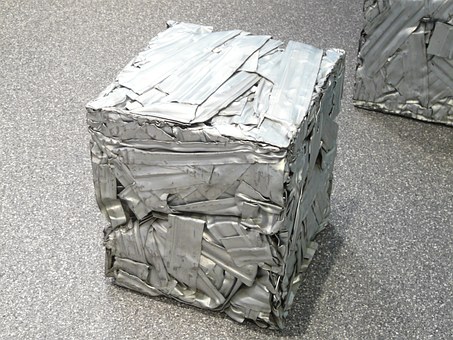Recycling a washer or dryer can be a difficult but rewarding task. Here at Gigonway, we want to help you get the most money for your scrap, so here are some tips on how to get the most out of an old or broken washer or dryer.
Should you disassemble a washer or dryer before scrapping it?
Dismantling a washer or dryer is no easy task, but many junkyards think it’s worth the effort. Scrap yards regularly receive both disassembled and complete washing machines and dryers, and we can confirm that they pay considerably more for disassembled appliances.
Therefore, if you are physically capable of disassembling an appliance such as a washer or dryer, and if you have or can easily acquire the tools to do so, it will always be worth the effort.

What are the advantages of disassembling an appliance before scrapping it?
Although most scrap metal recycling companies accept all forms of metal with some exceptions (usually for safety or legal reasons), companies in the scrap metal recycling industry do not and cannot pay the same amount for different types of metal.
This is because some metals are rarer and/or more useful in manufacturing than others. For example, aluminum is a great metal to use in general manufacturing, but it is very common and not good for extremely specialized uses. This means that recycling companies cannot afford a large amount of aluminum scrap.
Metals like copper, on the other hand, which are a little less common and a little more useful in more specialized types of manufacturing (such as use in electrical wire), are inherently more valuable. This means that a scrap metal recycler in Dallas or elsewhere may pay a bit more for copper and similar metals.
When a complete appliance arrives at a recycling plant like Encore, recyclers essentially have to estimate what combination of metals will make up the components inside the appliance. Some washers and dryers, for example, use valuable copper in their motors, while others do not.
Because estimating what a given appliance will be worth is a gamble for the company, they usually pay a little less. In addition, the company will have to pay employees or contractors to dismantle the appliance, which further reduces their salary.

How do you get the most value for your broken appliances and other scrap materials?
The best way to systematically get the most value for your broken appliances and other scrap metals is to dismantle the appliances and machines and sort the metals. For example, store all your steel with other steel, your aluminum with other aluminum, and your copper with other copper.
Doing this makes things easier and cheaper for the scrap metal recycler, which means they can afford to pay you more. Having your metals pre-sorted also helps promote worker efficiency and, in some cases, safety.
While it may not be worth your effort to disassemble very difficult or dangerous appliances or parts such as air conditioners or motors of any kind, disassembling a washer or dryer may be within your reach.
If you have confidently assembled or disassembled furniture, you can probably disassemble a washer or dryer as long as you try your best and remain patient and calm.
Value of 2020 Washer Scrap Value
Short answer: you can expect junkyards to pay you anywhere from $3 to $17 for most large appliances, depending on the type of appliance you want to scrap and current market conditions.
A very common scrap item. A typical washing machine weighs between 125 and 300 pounds. At the current price of light iron, which is around $80 per ton, you can get between $5 and $12.
Note that you can also dispose of a refrigerator as a complete unit. However, it is best to remove the compressor and any other valuable items to scrap separately. The metal frame of the refrigerator is worth about $0.30 per pound (the exact price depends on whether it is steel, stainless steel, or aluminum).
In general, we’ll pay a flat rate for a used broken washer and dryer, but don’t expect too much – on average, $7 to $10 is the norm. On the opposite side of that, if you break the machines yourself, you’re more likely to get more overall because of the parts inside that are more valuable.